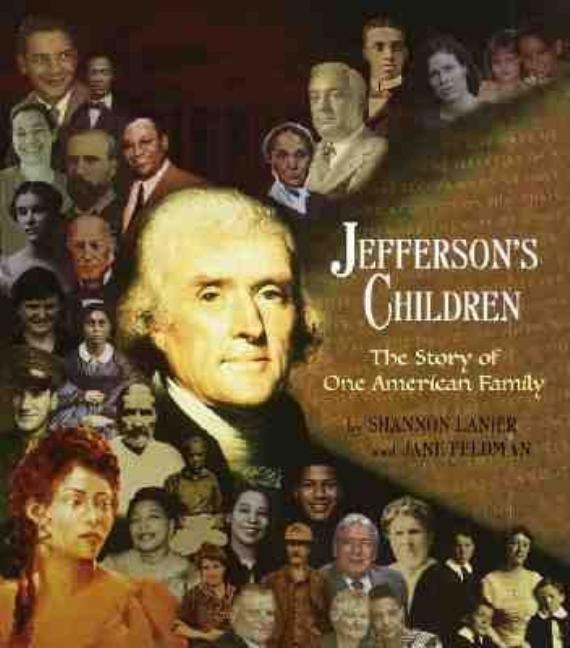Book Description
for Jefferson's Children by Shannon Lanier and Jane Feldman
From Cooperative Children's Book Center (CCBC)
By now, many people have heard about the controversy surrounding the descendants of the two women with whom Thomas Jefferson had children: Martha Wayles, his wife of ten years, and her half-sister, Sally Hemings, who lived her life as a slave owned by the Jefferson family. It is less widely known that Eston Hemings, the youngest son of Sally Hemings and Thomas Jefferson, moved his family to Madison, Wisconsin, in 1852. In Madison, Eston changed his name to E. H. Jefferson. He, his wife, and their three children passed into white society and became successful in business. The 14 living descendants of Eston Hemings Jefferson, who lacked the oral family history that characterized the other Hemings descendants, only recently learned of their African heritage. Ironically, the recent DNA proof came through Eston’s line. Shannon Lanier, a descendant of Sally Hemings and Thomas Jefferson through their son Madison Hemings, conducted interviews and gathered first-person statements from 38 Jefferson descendants. Some have always known their family history, some are just beginning to learn it, and others are having difficulty accepting their African American cousins. Accompanied by black-and-white photographs by Jane Feldman, the text makes a powerful comment on the racial issues that still face our nation. As one descendant, Lucian K. Truscott IV, says: “Hopefully, a day will come when this won’t be a story of land and blood and race. One day it will be a story of an American family.” (Age 10 and older)
CCBC Choices 2001. © Cooperative Children's Book Center, Univ. of Wisconsin - Madison, 2001. Used with permission.


